Bernard Stanford Massey, Harrie S. Massey, H. B. Gilbody019851283X, 9780198512837
Table of contents :
Title page ……Page 1
Date-line ……Page 2
PREFACE TO THE SECOND EDITION ……Page 3
PREFACE TO THE FIRST EDITION ……Page 7
ACKNOWLEDGEMENTS ……Page 9
CONTENTS ……Page 11
1. Introduction ……Page 15
2. The annihilation of free positrons ……Page 16
3. Positronium ……Page 17
4.1. Positronium formation in the Oere gap ……Page 19
4.2. Processes leading to quenching of ortho-positronium ……Page 21
5. Experimental methods for investigating slow collisions of positrons and of positronium in gases ……Page 22
5.1. The measurement of delayed coincidence annihilation spectra ……Page 25
5.1.1. Analysis of annihilation-time spectra ……Page 26
5.2.1. From the energy spectrum of single annihilation quanta ……Page 29
5.2.2. From observation of triple coincidences ……Page 34
5.3. Angular correlation measurements ……Page 37
6. Effect of magnetic fields on positronium formation ……Page 40
7.1. The effect on the positron annihilation rate ……Page 47
7.2. The effect on positronium formation ……Page 48
7.3. Experimental observation of the effects on positronium formation ……Page 53
7.4. Summary ……Page 57
8. Summary of experimental possibilities for studying reactions of positrons and of positronium in gases ……Page 58
9. Some historical notes ……Page 60
10.1. Introduction ……Page 61
10.2.1. The zero-order phase shift ……Page 63
10.2.2. The higher order phase shifts ……Page 70
10.2.3. Summarizing remarks ……Page 72
10.3. Collisions with helium atoms ……Page 73
10.3.1. The zero-order phase shift ……Page 74
10.3.3. The momentum-transfer cross-section ……Page 75
10.3.5. The angular correlation between two-photon annihilation quanta ……Page 78
10.4. Collisions with neon and argon atoms ……Page 79
10.5. Theoretical evaluation of cross-sections above the Ps formation threshold ……Page 82
11.1. Helium ……Page 83
11.2. Argon and neon ……Page 94
11.3. Other gases ……Page 101
12.2. Collisions with hydrogen atoms—exchange quenching ……Page 105
12.3. Collisions with helium atoms—pick-off quenching ……Page 107
13.1. Results at room temperature ……Page 110
13.2. Results at low temperatures—bubble formation ……Page 112
14. Positronium chemistry ……Page 119
15.1. Introductory ……Page 122
15.2.2. Hyperfine splitting of muonium ……Page 123
15.4. Depolarization of muons by muonium formation ……Page 125
15.5. Muonium formation in presence of longitudinal magnetic field ……Page 127
16.1. Direct observation of muonium precession frequency ……Page 128
16.2. Observation of micro-wave resonance spectrum of muonium ……Page 130
16.2.1. Observation at high magnetic fields ……Page 132
16.2.2. Observation at low magnetic fields ……Page 134
16.2.3. Pressure shift in the micro-wave resonance spectrum ……Page 136
17.1. Direct evidence for muonium formation in condensed materials ……Page 140
17.3. Measurement of $mu^+$ polarization in a longitudinal magnetic field ……Page 145
17.6. Measurement of spin relaxation time for $mu^+$ stopping in a condensed medium ……Page 147
17.7. Interpretation of the observations on muon spin depolarization ……Page 151
17.8. Physical processes involved in $mu^+$ depolarization ……Page 154
18.1. Effect of impurities on the micro-wave resonance spectrum of muonium ……Page 156
18.2. Effect of impurities on $mu^+$ spin relaxation time in argon ……Page 158
19. Muonium chemistry ……Page 161
2. Processes leading to mesic atom formation ……Page 168
2.1. Energy loss of fast negatively-charged particles ……Page 169
2.2. Capture of negative mesons ……Page 170
2.2.1. Capture of negative mesons by atomic hydrogen ……Page 171
2.2.2. Capture of negative mesons in molecular hydrogen ……Page 176
2.2.3. Capture of negative mesons by atoms other than hydrogen ……Page 178
2.2.4. Depolarization of negative muons in the capture process ……Page 181
3.1. De-excitation of mesic hydrogen (Me$^-$p) ……Page 182
3.2. Measurement of the de-excitation time of mesic hydrogen atoms ……Page 186
3.3. The de-excitation time of mesic atoms in liquid helium ……Page 190
3.4. De-excitation of heavier mesic atoms ……Page 191
3.5. The polarization of muons decaying at rest ……Page 192
3.6. Exchange collisions of ($mu^-$p) in hydrogen ……Page 196
4.1. The observation of muon-catalysed fusion ……Page 198
4.2.1. The bubble chamber method ……Page 200
4.2.2. The diffusion chamber method ……Page 202
4.3.1. Description of the basic processes ……Page 204
4.3.2. The yield of $gamma$-rays and re-emitted muons ……Page 206
4.3.3. Time distribution of $gamma$-ray emission ……Page 207
4.3.4. Influence of hyperfine structure effects on fusion rates ……Page 210
4.3.5. Influence of muon recycling and trapping on fusion rate ……Page 213
4.4.1. Rates for muon transfer and muonic molecule formation ……Page 215
4.4.2. Transfer rate of negative pions from gaseous hydrogen to argon ……Page 220
4.4.3. Scattering cross-sections of ($mu^-$p) and ($mu^-$d) atoms ……Page 222
5.1. The general theory ……Page 228
5.3. Collisions of ($mu^-$p) and ($mu^-$d) in hydrogen and deuterium ……Page 231
5.3.1. Scattering phases and cross-sections ……Page 235
5.3.2. Hyperfine effects in ($mu^-$p) and ($mu^-$d) scattering ……Page 237
5.3.3. Transfer of $mu^-$ from hydrogen to heavier elements ……Page 239
5.4. Formation of muonic molecules ……Page 241
5.5. Nuclear fusion rate in muonic molecules ……Page 243
NOTES ON RECENT DEVELOPMENTS ……Page 245
1 THE PASSAGE OF ELECTRONS THROUGH GASES; TOTAL COLLISION CROSS-SECTION, ITS DEFINITION AND MEASUREMENT ……Page 247
2 SWARM EXPERIMENTS WITH ELECTRONS IN ATOMIC GASES—MOMENTUM TRANSFER CROSS-SECTION ……Page 250
1. Observed cross-sections for ionization of neutral atoms ……Page 253
3. Ionization of metastable atoms ……Page 256
4. Detachment of electrons from H- ……Page 257
5. Inner shell ionization ……Page 258
1. Excitation of atomic hydrogen ……Page 260
2. Excitation of He ……Page 262
1. Further applications of the electron trap method ……Page 266
2. Detection of superelastic collisions ……Page 267
3. Measurements of differential cross-sections ……Page 268
4. Differential cross-sections in ionizing collisions ……Page 270
5. Further experiments on spin polarization in scattering ……Page 272
2. Relativistic effects including spin polarization ……Page 275
1.2. Ionization of H(2s) ……Page 278
2.1. Excitation of singlet states ……Page 279
2.2. Excitation of triplet states ……Page 281
3. Electron detachment from H by electron impact ……Page 282
5. Ionization of other atoms ……Page 283
1. General theoretical developments ……Page 285
2. Pseudo-state expansions ……Page 286
3. Extended polarized-orbital method ……Page 288
4. Collisions at intermediate energies—the Glauber method ……Page 289
5.1. Elastic scattering at energies below the excitation threshold ……Page 290
5.2. Elastic and inelastic scattering at energies above the 2-quantum excitation threshold ……Page 291
5.3. Elastic and inelastic scattering at intermediate energies ……Page 292
6.1. Elastic scattering ……Page 293
6.2. Inelastic scattering ……Page 294
7. Scattering by rare gas atoms ……Page 295
8. Scattering by alkali metal atoms ……Page 296
9. Scattering of electrons by neutral and ionized carbon, oxygen, and nitrogen ……Page 299
10. Scattering of electrons by other atoms ……Page 300
11. Excitation of fine structure transitions ……Page 301
1. The calculation of resonance energies and level widths ……Page 302
1.1.1. H- and He ……Page 304
1.1.2. He- ……Page 307
1.1.3. Other atoms and ions ……Page 309
2.1. The S, T, R, and M matrices ……Page 311
2.2. Threshold law for ionization ……Page 312
1. Diffraction of electrons by molecules ……Page 313
2. Scattering of electrons of medium speed by molecules ……Page 314
3.1.1. Experimental data ……Page 315
3.1.2. Theoretical results ……Page 317
4.1. H2 ……Page 320
4.3. N2 ……Page 322
4.5. NO ……Page 323
4.6. Summarizing remarks ……Page 324
11 COLLISIONS OF ELECTRONS WITH MOLECULES—EXCITATION OF VIBRATION AND ROTATION—ANALYSIS OF SWARM EXPERIMENTS AT LOW ENERGIES ……Page 325
1. Application of the sudden approximation ……Page 326
2. Collisions with polar molecules ……Page 327
3.1. Rotational excitation of H2 ……Page 329
3.2. Vibrational excitation (with and without rotational excitation) for H2 ……Page 331
3.3. Dependence on density of the drift velocity of electrons in normal and para H2 and D2 at 77 K ……Page 333
3.4. Oxygen ……Page 334
3.5. Nitric oxide ……Page 337
3.6. Nitrogen ……Page 338
3.8. Carbon dioxide ……Page 339
1. Time-of-flight measurements on metastable atoms and molecules—translation spectroscopy ……Page 340
2. Angular distribution of products of molecular dissociation ……Page 341
3. Determination of appearance potentials of different products in reactions involving attachment of electrons with molecules ……Page 342
4. New methods for measuring attachment rates ……Page 343
5. Spurious peaks in electron attachment observations ……Page 345
1.1. Electronic excitation ……Page 347
1.2. Ionization ……Page 350
2. Dissociation of H+ ……Page 351
3.1. Excitation ……Page 353
3.3. Excitation of the negative bands of N2+ ……Page 356
4.1. Excitation ……Page 357
4.2. Dissociative excitation ……Page 358
4.3.1. Dissociative attachment ……Page 359
4.3.2. Three-body attachment ……Page 360
5. Carbon monoxide ……Page 362
6. Nitric oxide ……Page 363
8. Attachment in N2O ……Page 364
9.2. Other hexafluorides ……Page 367
9.4. Bromine ……Page 368
14 COLLISIONS INVOLVING ELECTRONS AND PHOTONS—RADIATIVE RECOMBINATION, PHOTOIONIZATION, AND BREMSSTRAHLUNG ……Page 369
1.1. Some general formulae ……Page 370
1.2. Helium ……Page 371
1.3. Neon, argon, krypton, and xenon ……Page 372
1.4. Alkali-metal atoms ……Page 373
1.6. Other atoms ……Page 374
2.1. The measurement of cross-sections for unstable species ……Page 375
2.3. Neon ……Page 376
2.4. Argon, krypton, and xenon ……Page 377
2.5.1. Total photoionization cross-sections ……Page 379
2.5.3. Polarization phenomena. ……Page 380
2.6. Atomic oxygen and nitrogen ……Page 382
3.1. Introductory theoretical considerations ……Page 383
3.2. Hydrogen (H2) ……Page 385
3.3. H2+ and D+ ……Page 388
3.4. He2+ ……Page 389
3.5. Oxygen (O2) ……Page 390
3.6. Nitrogen (N2) ……Page 391
3.8.1. F2 and HF ……Page 392
3.8.2. Cl2 ……Page 395
3.8.3. Br2 and I2. ……Page 396
4. Multiphoton ionization of atoms and molecules ……Page 397
4.1. Theories of multiphoton ionization ……Page 398
4.2. Experimental study of multiphoton ionization ……Page 401
15 COLLISIONS INVOLVING ELECTRONS AND PHOTONS—PHOTODETACHMENT AND RADIATIVE ATTACHMENT ……Page 406
1.1. The measurement of kinetic energies and angular distributions of electrons resulting from photodetachment ……Page 407
1.2. Use of tunable lasers ……Page 408
2.2. O- ……Page 409
2.4. S- ……Page 410
2.5. He- ……Page 411
3.1. NO- and 02- ……Page 412
4. Multiphoton photodetachment ……Page 415
1. Introductory remarks and summary ……Page 416
2. The determination of the interaction energy by inversion, using experimental data ……Page 417
2.1. Application of inversion procedure to Na-Hg interaction ……Page 420
3. The interactions between alkali-metal and rare-gas atoms ……Page 421
5.1. The effect of symmetry on the scattering of atoms by like atoms ……Page 423
5.2. The He-He interaction ……Page 424
5.3. Other rare gases ……Page 428
6. Viscosity of atomic hydrogen ……Page 429
7. Collisions involving molecules ……Page 430
1. Introduction ……Page 431
2. Vibrational relaxation ……Page 432
2.1. Observed vibrational relaxation of H2, D2, and HD ……Page 433
3. Vibration-vibration transfer ……Page 434
3.2. VV collisions between other diatomic molecules ……Page 435
3.4. Theory of VV transfer processes ……Page 437
5. Rotation-translation (RT) transfer ……Page 439
6. Further theoretical discussion of inelastic collisions ……Page 440
7. Scattering of state-selected molecular beams ……Page 441
8. Collisions involving change of orientation only ……Page 442
9.1. Reactions involving alkali-metal atoms ……Page 443
9.2. Optical model analysis for reactive scattering ……Page 449
9.3.1. D+H2->HD+H ……Page 451
9.3.2. Reactions of deuterium atoms with halogen atoms ……Page 452
9.3.5. Endothermic reactions ……Page 453
1. Introduction ……Page 454
2. Quenching of resonance radiation ……Page 455
3.1. Disorientation and disalignment of Hg(6 3p1) by foreign gas atoms ……Page 457
3.2. Disalignment of excited states of Ne ……Page 458
3.3. Depolarization of potassium resonance radiation ……Page 459
4.1.1. Collision induced transitions between 2p1/2 and 2p3/2 states of alkalimetal atoms ……Page 461
4.1.2. Transfer of coherence between fine structure levels on collision ……Page 462
4.1.3. Excitation of transitions between the 63P2 and 63PX levels of mercury ……Page 463
4.3. Excitation transfer in helium ……Page 464
5.1. Ionization by metastable atoms ……Page 468
5.1.1. Energy distributions of ejected electrons ……Page 471
5.2. Dissociative excitation by metastable atoms ……Page 475
5.4. Diffusion coefficient and charge transfer for He(2 3s) metastable atoms in helium ……Page 476
5.5.1. Deactivation of O(1s). ……Page 478
5.5.2 Quenching of O(1d). ……Page 481
5.6. Quenching of N(2d) ……Page 483
6. Spin-exchange collisions—measurement of differential cross-sections ……Page 484
7. Spin-reversal collisions ……Page 486
8.1. Depolarization cross-sections for Hg (6 3p1) in rare gas collisions ……Page 490
8.3. Theory of Penning ionization ……Page 492
8.4. Impact excitation of fine structure transitions in alkali-metal atoms ……Page 493
8.5. Theoretical analysis of observed cross-sections for spin exchange ……Page 495
8.6. Theory of spin-reversal collisions ……Page 497
19 COLLISIONS UNDER GAS-KINETIC CONDITIONS—IONIC MOBILITIES AND IONIC REACTIONS ……Page 500
1. Transport processes associated with positive ions—transverse and longitudinal diffusion ……Page 501
2.1. Pressure dependence of mobility ……Page 503
2.2. Cluster formation ……Page 504
3. Notes on techniques for measuring ionic reaction rates ……Page 505
4.1. Ions in oxygen and in helium-oxygen mixtures ……Page 512
4.2. Ions in nitrogen and in nitrogen-helium mixtures ……Page 513
4.4. Ions in nitrogen-oxygen mixtures ……Page 515
4.5. Reactions of oxygen and nitrogen ions with NO ……Page 516
4.7.1. Reactions of H+ with O, NO, and CO2. ……Page 517
4.7.4. Reactions of CO2+ with O, O2, NO, and H. ……Page 518
4.7.6. Water cluster ions. ……Page 519
4.7.8. Reactions of Si+ and SiO+ in atmospheric gases. ……Page 522
4.7.9. Reactions between metal atoms and atmospheric ions. ……Page 523
4.8. Reactions of Ar+ and Ne+ ions ……Page 524
4.10. Partial charge transfer from doubly-charged ions ……Page 525
5. Mobilities of negative ions in oxygen ……Page 526
6.1. Reactions of atmospheric interest ……Page 527
6.2. Reactions involving C- ……Page 532
1. Electron loss in helium afterglows at high pressures ……Page 534
3. Further measurements of recombination to O2+ and O4+ ……Page 538
4. Dissociative recombination to Kr2+, O2+, and N2+ at high gas and electron temperatures ……Page 539
5. Dissociative recombination to H2+ —theoretical calculation ……Page 540
6. Reactions in the earth’s ionosphere ……Page 541
1.1. The glory effect in collisions at relatively high energies ……Page 542
1.2. The use of sputter sources of neutral atom beams ……Page 544
1.3. Combining rule for repulsive interactions ……Page 545
2.1.1. By rare gas atoms ……Page 546
2.1.2. By molecular nitrogen ……Page 548
2.2. Elastic collisions of Li+ with He ……Page 549
2.3. Collisions of ions of noble metals of period II elements with Ne and Ar ……Page 550
2.4. Collisions of K+ ions with various gases ……Page 551
1. Slow collisions of He+ with He ……Page 552
2. Slow collisions of Li+ with He ……Page 554
5. Collisions at intermediate energies. H+ – H collisions ……Page 555
1. Energy and angular distributions of electrons emitted in ionizing collisions ……Page 557
2.2. Charge transfer involving halogen negative ions ……Page 558
3.1. Metastable hydrogen atoms ……Page 559
3.2. Metastable helium atoms ……Page 561
3.3. Excited hydrogen molecules ……Page 562
5. Dissociation of fast molecular ions on impact with neutral targets ……Page 563
6. Inner shell ionization by heavy particles ……Page 564
7. Ion pair formation in neutral-neutral collisions ……Page 568
1. Excitation in collisions involving hydrogen and helium beams ……Page 569
1.1. Excitation of helium ……Page 570
2. Excitation of alkali-metal atoms in charge transfer collisions with alkali-metal ions ……Page 571
3. Differential cross-sections for collisions involving excitation ……Page 572
4. Excitation of vibration in slow collisions of ions with molecules ……Page 574
26 COLLISIONS OF SLOW POSITRONS AND OF SLOW POSITIVE MUONS IN GASES ……Page 575
ERRATA ……Page 579
Separate Fig. 27.11 and 27.12 ……Page 582
AUTHOR INDEX ……Page 583
SUBJECT INDEX ……Page 587
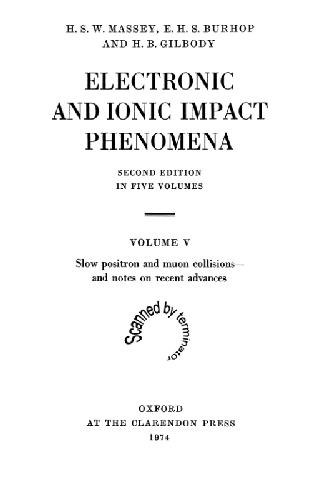
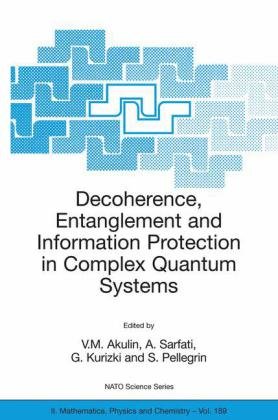
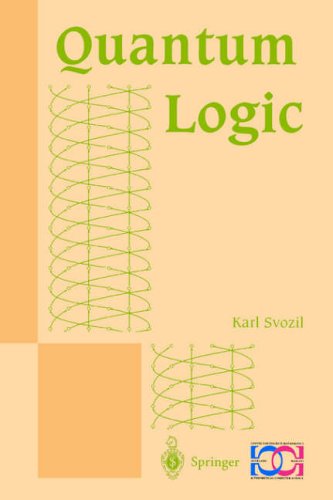

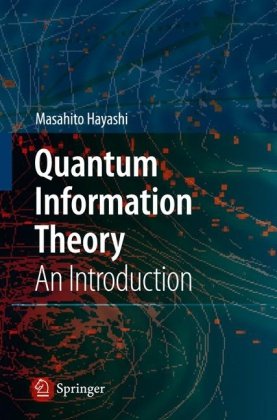

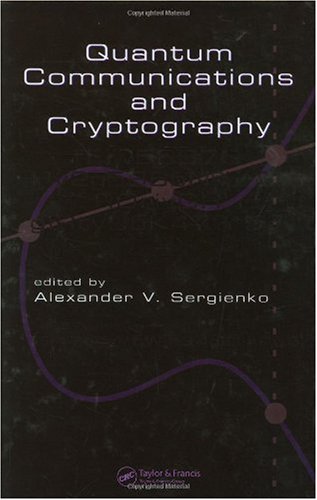
Reviews
There are no reviews yet.